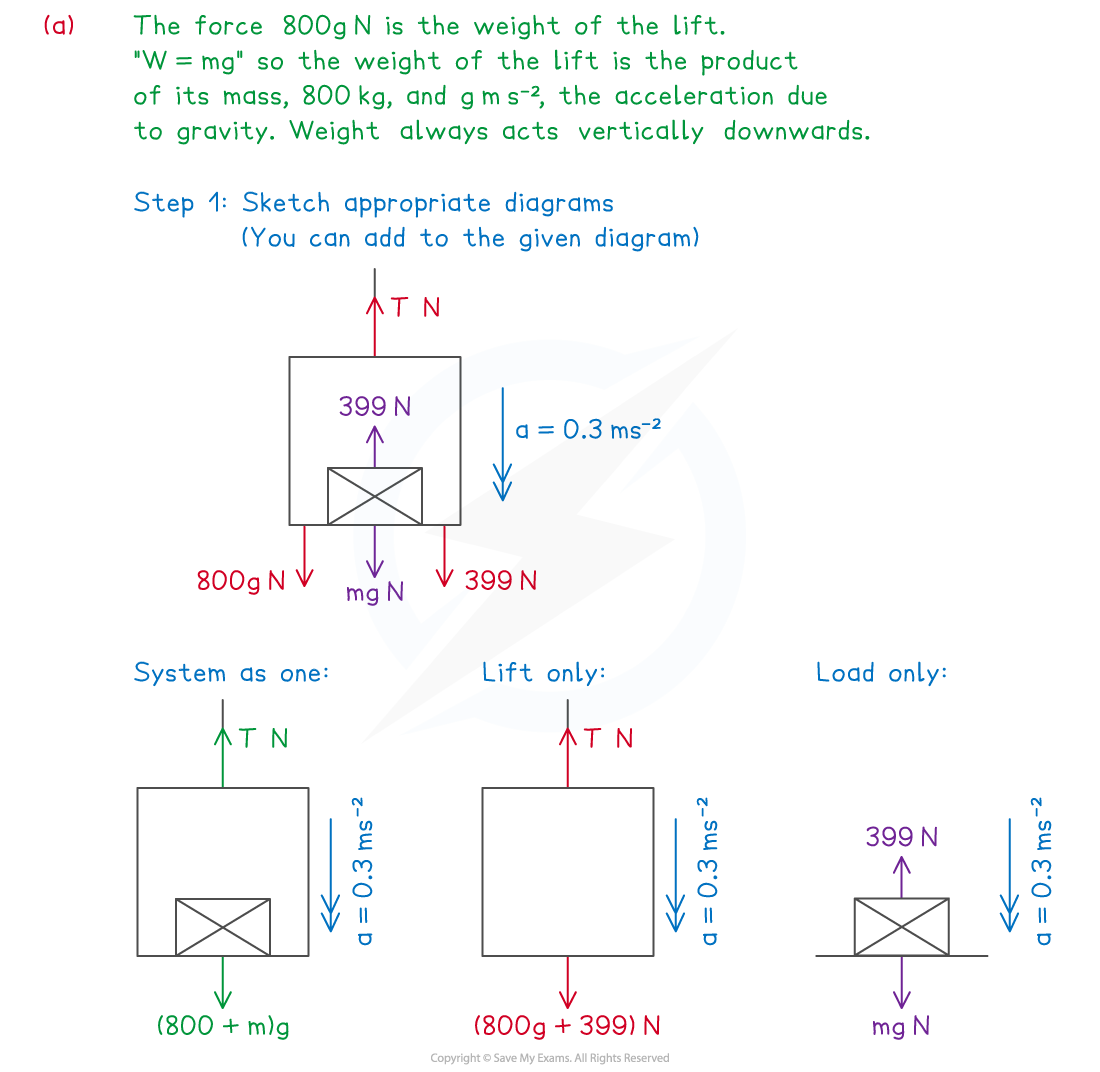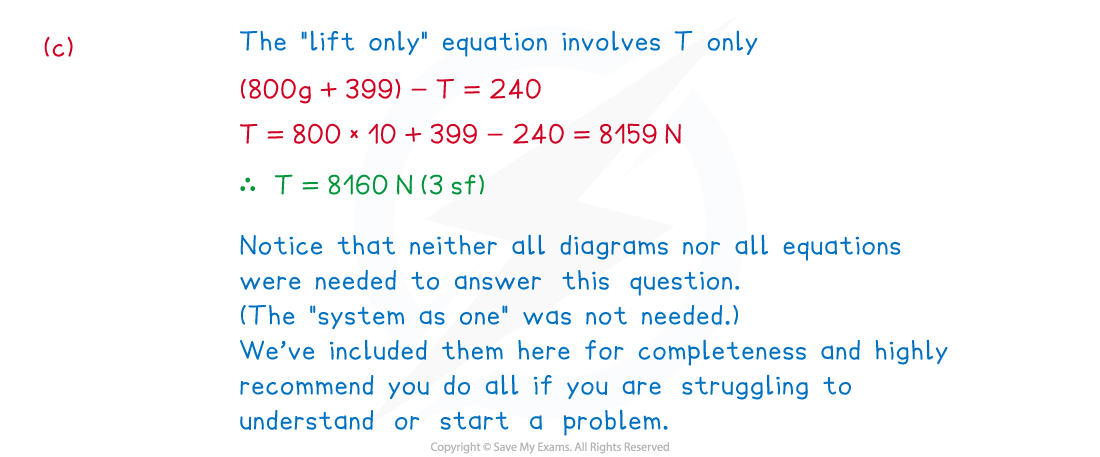Did this video help you?
Connected Bodies - The Lift Problem (CIE AS Maths: Mechanics): Revision Note
Connected Bodies - The Lift Problem
What is the lift problem?
- The lift problem involves objects (particles) that are directly in contact with each other – typically a person or crate in a lift
- If it is not a person in the lift the object is often referred to as a load
- There may be more than two objects involved – for example two crates stacked on top of each other on a lift floor
- Vertical motion is involved so use g m s-2, the acceleration due to gravity, where appropriate
- Gravity always acts vertically downwards
- Depending on the positive direction chosen – and which other forces are acting vertically – acceleration (a m s-2) may be positive or negative
- Remember that acceleration links F= ma (N2L) and the ‘suvat’ equations
How do I solve ‘lift problem’ type questions?
- Lift problems will only consider motion in the vertical direction
- As motion is involved Newton’s Laws of Motion apply so use “F = ma” (N2L)
- The steps for solving lift problems are the same as for solving rope problems
- As both the lift and load are travelling in the same direction the system can be treated as one particle (as well as separate particles)
- There is no reaction force acting on the lift or load when treating the particle as one - mathematically they cancel each other out
- You can think of the upward R N as counteracting the person’s weight and moving the load upwards; N3L applies so there must be an equal force acting in the opposite direction; - you can think of this as the force keeping the person in contact with the lift floor whilst it is moving
- For constant acceleration the ‘suvat’ equations could be involved

How do we form the equations for problems involving lifts?
- Form the equations as follows:
- Treating the lift and person/load as one
(↓) (M + m)g - T = (M + m)a
-
- Treating the lift and person/load separately
Lift: (↓) (Mg + R) - T = Ma
Person/load: (↓) mg - R = ma
- You do not necessarily need all equations but if in doubt attempt all and it may help you make progress
Worked example

(a)
Briefly explain how the force of 800g N arises in this problem.


(b)
Find the mass of the load,  kg.
kg.

(c)
Find the tension, T N, in the cable of the lift.

Examiner Tip
- Sketch diagrams or add to any diagrams given in a question.
- If in doubt of how to start a problem, draw all diagrams and try writing an equation for each. This may help you make progress as well as picking up some marks.
- Watch out for “hidden lift” problems – we’re not strictly talking elevators here! For example, a load being raised by a crane; the “lift” would be a platform (such as a pallet) and the “lift cable” would be the cable connecting the crane to the load. Another common alternative is a fast rising (or falling) fairground ride.

You've read 0 of your 5 free revision notes this week
Sign up now. It’s free!
Did this page help you?
